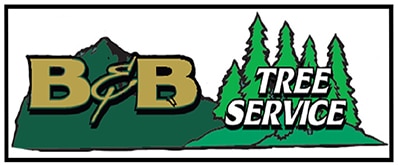Step into your backyard and imagine a landscape bursting with vitality and splendor. Achieving such an idyllic scene requires meticulous care, and one crucial element of landscape maintenance is tree cutting. In this captivating blog, we embark on a journey to explore how the art of tree cutting can transform your landscape, elevating its health and beauty to new heights.
Unveiling the Hidden Potential
Picture a landscape overwhelmed by overgrown trees, where sunlight struggles to penetrate the dense canopy, and air circulation is hindered. Tree cutting serves as an art form, unveiling the hidden potential of your outdoor space. By removing excess branches and reshaping the tree’s structure, you allow sunlight to filter through, nourishing the surrounding vegetation. Improved air circulation reduces the risk of diseases and fosters a healthier environment for both trees and plants.
Trees, as the backbone of your landscape, provide shade, habitat for wildlife, and aesthetic appeal. However, when left unattended, they can overshadow other plants, preventing them from receiving sufficient sunlight. With strategic tree cutting, you can create a harmonious balance that allows all elements of your landscape to flourish.
Timing and Technique:
The Art of Craftsmanship Every masterpiece requires a skilled artist, and tree cutting is no exception. Timing is key, and understanding the specific needs of different tree species during various seasons is crucial. Winter is often an ideal time for tree cutting as most trees are dormant, minimizing the risk of stress or damage. However, certain species may have different requirements, and it’s essential to consult with a professional arborist to determine the best timing for your specific trees.
When it comes to technique, there are several approaches to tree cutting that can enhance both the health and appearance of your landscape. Crown thinning involves selectively removing branches to reduce the density of the tree’s canopy. This allows for better light penetration and air circulation, promoting healthier growth throughout the tree. Crown lifting focuses on removing the lower branches to create space and provide a clear view of the surrounding area. Crown reduction, on the other hand, is employed to decrease the overall size of the tree while maintaining its shape and structure.
Proper technique ensures that tree cutting is carried out with precision and care, minimizing the risk of damage and promoting optimal regrowth. Hiring a professional arborist is highly recommended, as they have the expertise, experience, and necessary tools to execute the tree cutting process safely and effectively.
Assessing Tree Conditions and Identifying Hazards
Imagine discovering potential hazards hidden within your landscape. Diseased or crossing branches pose risks to both property and personal safety. Before commencing any cutting, a thorough assessment of tree conditions is essential. Look for signs of distress such as dead or discolored branches, structural imbalances, or interference with structures and utility lines. Identifying these hazards allows for targeted tree cutting, promoting a safer and more harmonious outdoor space.
A certified arborist can conduct a comprehensive evaluation of your trees, identifying potential risks and providing recommendations for appropriate tree cutting techniques. They have the knowledge to distinguish between healthy and diseased branches, ensuring that only the necessary cuts are made to preserve the long-term health of your trees.
The Metamorphosis:
Witnessing Beauty Unfold Immerse yourself in the enchanting transformation that occurs after tree cutting. As you gaze upon the revitalized landscape, you’ll notice improved tree structure, a burst of rejuvenated growth, and a symphony of colors. Each trimmed branch contributes to the overall aesthetics, creating a visually pleasing and balanced environment. Witness the positive ripple effect as neighboring plants thrive with increased sunlight and reduced competition for essential resources.
Additionally, tree cutting can enhance the safety of your property. Removing dead or weakened branches minimizes the risk of them falling during storms or strong winds. By proactively addressing potential hazards through tree cutting, you create a safer outdoor environment for yourself, your family, and your visitors.
Nurturing the New:
Post-Cutting Care and Maintenance The journey doesn’t end with tree cutting—it continues with post-cutting care and maintenance. Provide your trees with the attention they deserve by watering and fertilizing them appropriately. Apply a layer of organic mulch around the base of the tree to retain moisture, suppress weeds, and improve soil health. Regular monitoring for signs of stress or damage allows for timely intervention, ensuring the ongoing health and longevity of your landscape masterpiece.
Embracing the Art of Tree Cutting for a Thriving and Picturesque Landscape
As you take a step back and admire the transformation of your landscape, the journey from overgrown chaos to a harmonious haven becomes a testament to the power of tree cutting. By embracing the art of tree cutting, understanding the importance of timing and technique, and nurturing your landscape through careful maintenance, you unlock the hidden potential of nature. Let your outdoor space thrive, exuding health and beauty for you and future generations to enjoy.

